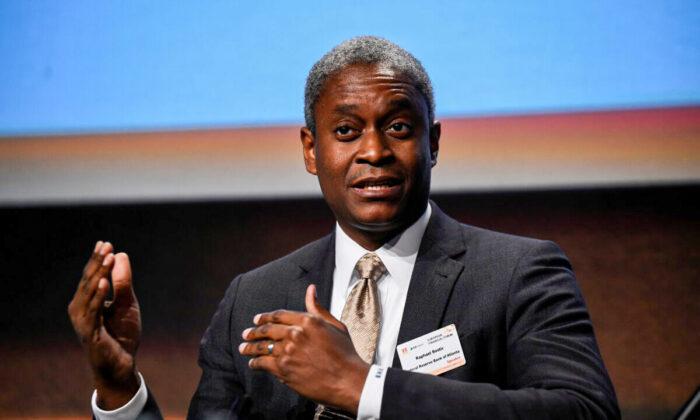The message was loud and clear from multiple Federal Reserve officials: Interest rates will stay higher this year, the benchmark rate might increase, and it’s unlikely there will be any rate cuts this year.
Inflation is still plaguing monetary policymakers, and restoring price stability, even in the face of a recession, is the chief priority for the U.S. central bank.
Inflation Is the Top Job
Atlanta Fed Bank President Raphael Bostic said he doesn’t foresee any rate cuts “until well into 2024,” even if the U.S. economy slips into a recession.Returning inflation to the Fed’s 2 percent target rate “is job No. 1,” he says.
Because of persistently high inflation, resilient consumer spending levels, and tight labor markets, “there’s still going to be upward pressure on prices,” Bostic said.
“If there’s going to be a bias to action, for me, it would be a bias to increase a little further as opposed to cut,” he said. “There’s still a lot of confidence that our policies are going to be able to get inflation back down to our 2% target. And to be fully clear, we’re going to do all that we need to make sure that that happens.”
In April, the annual consumer price index eased below 5 percent for the first time in two years. In addition, the personal consumption expenditure (PCE) price index, the Fed’s preferred inflation gauge, slowed to 4.2 percent, the lowest since May 2021.
Won’t Get Fooled Again
Minneapolis Fed Bank President Neel Kashkari said he wouldn’t be satisfied with a few months of positive data.
“We need to finish the job,” he said, adding that the Fed needs to do so “in an orderly manner,” without leading to a deep recession.
“We’ve been surprised how persistent it has been. It is coming down, but so far it’s been pretty persistent,” he said. “The real question is when inflation is going to come down.”
Recent reports suggest that inflation outlooks among consumers have been sticky.
Not Yet Convinced
Despite 10 straight months of slowing inflation, Richmond Fed Bank President Thomas Barkin is still determining whether price pressures are steadily declining. As a result, he said he is open to either an 11th straight rate increase or leaving the benchmark fed funds rate at a range of 5–5.25 percent.For now, officials must assess the data as credit card spending is flat, the labor market remains tight, the banking sector faces significant stress, and financial markets monitor the debt ceiling standoff.
According to the Richmond Fed Bank chief, the employment situation has “moved from red hot to hot,” adding that there is “enduring inflation.”
Ultimately, Barkin won’t make his final decision until closer to the June 13–14 FOMC meeting.
One inflation metric that Fed officials, especially Chair Jerome Powell, are paying close attention to is core PCE services ex-housing. This measurement, which the central bank considers the most accurate picture of underlying inflation in the economy, eliminates housing and food prices and looks at everything from haircuts to health care to hospitality. Unfortunately for monetary policymakers, it has remained stubborn at more than 4 percent.





